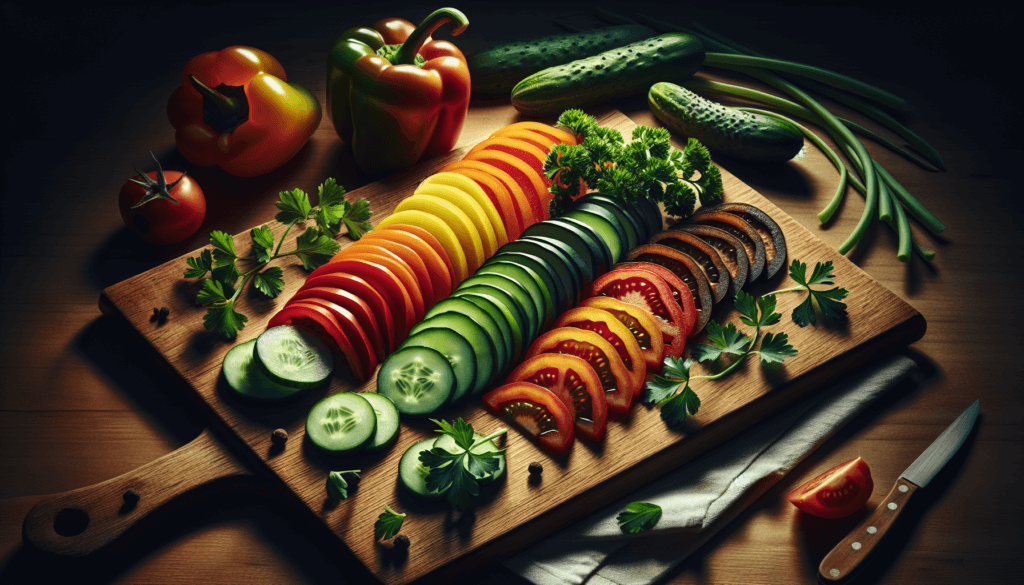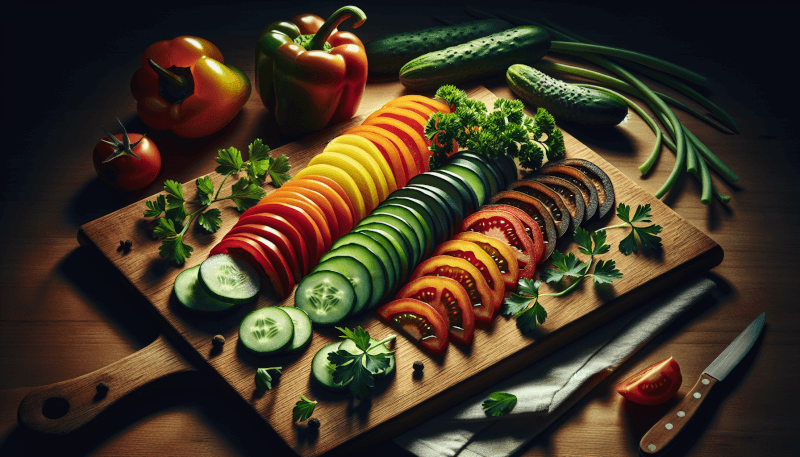You know how frustrating it can be when your fresh, vibrant vegetables start to turn brown before you even have a chance to enjoy them. Whether you’re preparing a delicious salad or a lovely stir-fry, preventing this discoloration is essential to maintaining the appetizing appearance of your dishes. Luckily, there are a few simple yet effective methods that can help you keep your vegetables looking fresh and appetizing for longer. In this article, we will explore the best ways to prevent vegetables from turning brown, ensuring that you can savor their taste and beauty to the fullest.

Choose Fresh Vegetables
When selecting fresh vegetables, there are a few key things to keep in mind. First and foremost, vibrant colors are a sign of freshness. Look for vegetables that have a rich and vibrant color, as this indicates that they are at their peak ripeness. Avoid vegetables that have bruises or blemishes, as these can be a sign of spoilage. Additionally, check for firmness and crispness. Vegetables should feel firm when you gently squeeze them and should have a crisp texture. This ensures that they are not overripe or wilted.
Handle Vegetables Properly
Properly handling vegetables is crucial in maintaining their freshness. When washing vegetables, it’s important to do so gently to avoid damaging them. Avoid excessive handling, as this can contribute to bruising and spoilage. When it comes to cutting vegetables, using a sharp knife is key. A sharp knife will make clean cuts, minimizing damage to the vegetable’s cells and reducing the chance of browning.
Keep Vegetables Fresh
Storing vegetables properly is essential for preserving their freshness. To keep your vegetables fresh, store them in a cool, dark place. Heat and light can accelerate the ripening process and contribute to spoilage. Using breathable containers or bags is also important. This allows air circulation, which helps to prevent moisture buildup and reduces the risk of rotting. Lastly, store different types of vegetables separately. Some vegetables, like onions, release gases that can cause spoilage in other vegetables. Keeping them separate will help to maintain the freshness of each individual vegetable.
Blanching Method
Blanching is a method used to partially cook vegetables before freezing or using them in recipes. It helps to preserve the color, texture, and nutritional value of the vegetables. To blanch vegetables, start by bringing a pot of water to a boil. Once the water is boiling, prepare an ice bath by filling a large bowl with ice water. Immerse the vegetables in the boiling water for a short time, usually only a few minutes. This process helps to deactivate enzymes that can cause browning. After blanching, transfer the vegetables to the ice bath to rapidly cool them and stop the cooking process. Drain the vegetables and pat them dry before using or storing.

Acidulated Water Soak
Another method to prevent browning is the acidulated water soak. To create an acidulated water solution, simply mix water with lemon juice or vinegar. Soak the vegetables in the solution for a few minutes before removing and patting them dry. The acid in the water helps to inhibit the browning process by lowering the pH of the vegetables. This method is particularly effective for preventing browning in delicate greens and fruits.
Use Citrus Juice
Citrus juice, such as lemon, lime, or orange juice, can be a handy tool in preventing vegetables from turning brown. The natural acidity of citrus fruits can slow down the enzymatic browning process. To use this method, simply squeeze fresh citrus juice and brush or sprinkle it onto the cut surfaces of the vegetables. Alternatively, you can cover the vegetables with plastic wrap or place them in an airtight container with a splash of citrus juice. This will help to maintain the freshness and vibrant color of the vegetables.

Apply Ascorbic Acid
Ascorbic acid, also known as vitamin C, can be used to prevent browning in vegetables. Dissolve vitamin C or citric acid powder in water to create an ascorbic acid solution. Dip the vegetables in the solution, making sure they are fully coated, and allow them to dry before using or storing. Ascorbic acid works by inhibiting the enzyme responsible for browning reactions. This method is particularly effective for vegetables that are high in vitamin C, such as bell peppers and broccoli.
Cook Immediately
When it comes to preventing browning in vegetables, it’s important to start the cooking process soon after cutting them. Exposure to air can trigger enzymatic browning, so it’s best to minimize the amount of time that cut vegetables are exposed. Heat or cook the vegetables thoroughly, as the heat will denature the enzymes responsible for browning. This will help to preserve the color and freshness of the vegetables. Avoid leaving cut vegetables out for extended periods of time, as this can hasten the browning process.

Use Inhibiting Solutions
Inhibiting solutions, such as a saltwater solution, can be used to prevent browning in certain vegetables. To create a saltwater solution, prepare a mixture of water and salt. Immerse the vegetables in the solution for a short time, usually only a few minutes, before removing and rinsing them. The saltwater helps to inhibit the enzymatic browning process by creating an unfavorable environment for the enzymes. This method is particularly effective for vegetables like potatoes and artichokes.
Avoid Oxidation
Oxidation is a natural process that can cause vegetables to turn brown. To prevent oxidation, there are a few simple methods you can use. Leaving the skin on certain vegetables can help to protect them from browning. Submerging cut vegetables in water can also help to slow down the oxidation process. Additionally, covering cut vegetables with a damp towel can create a barrier between the vegetable and the air, reducing the exposure to oxygen. These methods are particularly useful for vegetables like apples, avocados, and lettuce.
By following these tips and techniques, you can ensure that your vegetables stay fresh and vibrant. Whether you’re storing, preparing, or cooking vegetables, taking the proper steps to prevent browning will help to maintain their quality and appearance. So next time you’re handling vegetables, remember to choose fresh produce, handle them with care, and utilize methods such as blanching, acidulated water soaks, and ascorbic acid applications. With these practices in mind, you’ll be able to enjoy the natural flavors and vibrant colors of your vegetables for longer periods of time.



